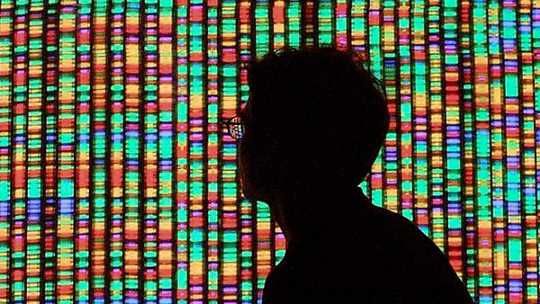
The completion of the first draft of the human genome sequence was announced to rapturous applause in June 2000 to an audience of journalists gathered in the White House and Downing Street. Craig Venter, who led one of the two teams of scientists that achieved this remarkable feat, said that having access to this information held “the potential to reduce the number of cancer deaths to zero during our lifetimes”. And President Bill Clinton claimed that “it is now conceivable that our children’s children will know the term cancer as only a constellation of stars”.
Fifteen years later, you don’t need to be a scientist to realise that this isn’t quite what has happened. So what went wrong? Are the huge promises made by Venter and others more rhetoric than reality, or is there still hope for personalised medicine?
Your genetic code is unique to you, unless you are an identical twin. It specifies exactly why each part of your body is the way it is. But as well as controlling why your hair is brown and not black, variations to your genetic code also determine the risk you have of developing certain diseases, and why you might respond well to some drugs and not others.
The publication of the human genome sequence at the turn of the century heralded a new era of medicine, where therapies would be tailored to each person’s unique genetic code, making indiscriminate and damaging treatments like chemotherapy a thing of the past.
So, if the technology is available to sequence everyone’s genome, why don’t doctors now ask for a DNA sample as part of a routine diagnosis?
Not All Junk DNA Is Rubbish
It’s because, over a decade after the first draft of the human genome was published, we still really don’t have any idea of what most of it actually does.
One of the most surprising outcomes of the completion of the first draft of the sequence was that there are far fewer genes than anyone anticipated. In fact, genes make up only 2% of the human genome, with the remaining 98% often dismissed as “junk” DNA.
The next surprise came when, after sequencing the genomes of thousands of patients suffering from a variety of genetic disorders, scientists discovered that 88% of changes to the genetic code that correlated with the disease were found in the junk DNA – the 98% of the genome that doesn’t make protein.
So now we scientists have a major problem. We can sequence a patient’s genome efficiently and economically, we can process the data rapidly, and we can identify changes to the DNA that are associated with the disease in question. But, in most cases, we have no idea how those changes cause the symptoms of the disease.
Cracking The Code
There is now a major drive among researchers in the genomics field to develop tools to address this issue. It is known that one thing harboured in this junk DNA are switches that tell certain genes when and where in the body to turn on (this is why you only have one nose, and don’t start sprouting eyes on your elbow).
It is also known that many disease-causing changes to your DNA are found within these switches, so that a given gene doesn’t turn on or off at the right time, or turns on at the wrong time somewhere in the body where it shouldn’t be active. If the gene in question controls how cells grow, the result of the broken switch can be cancer.
However, identifying these switches and linking them to the genes they affect is not a trivial task. It requires enormously complex experiments with rare and precious tissue samples donated by patients, and then a vast amount of computing power to sequence, analyse and interpret the results.
The Wellcome Trust has just awarded a £3m grant to the institute where I work, the MRC Weatherall Institute of Molecular Medicine at the University of Oxford, to process samples of DNA from patients known to have a given genetic disease, identify the changes to the DNA which underlie the condition in question, and try and link these changes to genes which may cause the diseases themselves.
With this strategy, we hope to add functionality to the DNA sequence information, and try to work out what that 98% of junk DNA actually does and how it contributes to disease progression.
Personalised medicine remains an achievable goal, but this is why the promises made by Venter, when the draft sequence was first published over a decade ago, have yet to be fulfilled. Yes, we can read the human genetic code, but we are a long way from understanding what it means.
About The Author
 Bryony Graham, Postdoctoral Research Scientist in Molecular Genetics, University of Oxford. Her research interests focus on understanding the non-protein coding regions of the genome, or 'junk DNA', using stem cells and red blood cells as experimental systems.
Bryony Graham, Postdoctoral Research Scientist in Molecular Genetics, University of Oxford. Her research interests focus on understanding the non-protein coding regions of the genome, or 'junk DNA', using stem cells and red blood cells as experimental systems.
This article was originally published on The Conversation. Read the original article.
Related Book:
at

Thanks for visiting InnerSelf.com, where there are 20,000+ life-altering articles promoting "New Attitudes and New Possibilities." All articles are translated into 30+ languages. Subscribe to InnerSelf Magazine, published weekly, and Marie T Russell's Daily Inspiration. InnerSelf Magazine has been published since 1985.

Thanks for visiting InnerSelf.com, where there are 20,000+ life-altering articles promoting "New Attitudes and New Possibilities." All articles are translated into 30+ languages. Subscribe to InnerSelf Magazine, published weekly, and Marie T Russell's Daily Inspiration. InnerSelf Magazine has been published since 1985.























